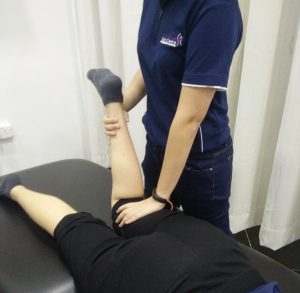
Most people know that after surgery (especially orthopedic surgery), physiotherapy is required to restore and increase the movement of the joints (range of motion), muscles’ flexibility and strength, coordination and balance control in order to promote self-care ability and enhance activities of daily living (ADLs). But they do not know that “pre-operative physiotherapy” is even more important and more effective than post-operative physiotherapy!
The effects of “pre-operative physiotherapy” had been proven and affirmed by many studies. In fact, what can “pre-operative physiotherapy” help?
It can be roughly divided into few aspects:
- Remind patients about the problems that they will encounter after surgery and how to solve them. For example: A walker will be used for their functional activities after hip / knee joint replacement. So, the correct way to use walker or going up and down the stairs have to be taught to patients before the surgery. (because the wound is painful and swollen after surgery, it is not easy to learn at that time)
- For the patients who required several times of surgery. This is because few areas are involved in injury but unable to be resolved in one operation, so the doctor will carry out several times of surgery in order to treat the injured areas. For the areas where the first operation unable to be performed, pre-operative physiotherapy may help to reduce inflammation and prevent recurrent injury while waiting for the next operation.
- While waiting for the optimal operation time. Not all traumatic injuries required immediate surgery, for example, many previous studies have pointed out that the most optimal time for the surgery of anterior cruciate ligament (ACL) of the knee is at about six weeks after the injury. However, some of the patients underwent the surgery at second or third week after the injury. In government hospitals, most of the patients are scheduled in several months or even one year after the injury. Within six weeks after the injury, physiotherapy plays an important role to achieve the ideal condition of knee joint before undergo the In order to achieve the maximum effect of ACL reconstruction, the knee joint should not have any significant swelling and pain, the movement of the knee joint is normal, and the muscles around the knee joint are not excessive atrophy before ACL surgery.
- Exercise to optimize body function in order to improve post-operative results. Hip dislocation in cerebral palsy children often requires surgical fixation. However, if the spastic hip adductor muscles are not loosened before surgery for the femoral head to be placed in the acetabulum, and the hip abductor muscles are weak to maintain the position of the femur, then hip dislocation will occur again. The children will inevitably need to go for another surgery again.
Pre-operative physiotherapy can affect the functional ability before surgery and has relationship with maintaining the level of physical activity after surgery. It can also reduce the occurrence of post-operative complications and achieve the best surgical results.
References:
- Fors, M., Enthoven, P., Abbott, A., & Öberg, B. (2019). Effects of pre-surgery physiotherapy on walking ability and lower extremity strength in patients with degenerative lumbar spine disorder: Secondary outcomes of the PREPARE randomised controlled trial. BMC Musculoskeletal Disorders, 20(1).
- Kisner, C. & Colby, L. A. (2007). Surgical Interventions and Postoperative Management. Therapeutic exercise: foundations and techniques. 5th Ed. Philadelphia, PA: F.A. Davis Company.
- Kwok, I. H. Y., Paton, B., & Haddad, F. S. (2015). Does Pre-Operative Physiotherapy Improve Outcomes in Primary Total Knee Arthroplasty? — A Systematic Review. The Journal of Arthroplasty, 30(9), p.1657–1663.
